22 Clever Fall Vegetable Garden Ideas for Small Spaces (You Won’t Believe How Easy #10 Is!)
As the leaves begin to turn and the air gets crisper, there’s something magical about fall. It’s the perfect time to embrace your inner gardener, even if you’re limited on space. You can still cultivate a bountiful fall vegetable garden, adding vibrant colors and fresh flavors to your meals. From innovative vertical gardens to container options that fit neatly on your patio, these ideas will inspire your small space gardening dreams.
Get ready to explore some clever and creative ways to maximize your gardening efforts this fall. Whether you live in an urban setting or simply lack a large backyard, there are plenty of ways to grow your own delicious vegetables. Let’s dig into these ideas and find the inspiration you need for a thriving fall garden in your small space!
Contents
- 1. Vertical Garden Towers
- 2. Raised Garden Beds
- 3. Container Gardening
- 4. Window Box Gardens
- 5. Hydroponic Systems
- 6. Vertical Wall Gardens
- 7. Grow Bags
- 8. Small-Scale Greenhouses
- 9. Square Foot Gardening
- 10. Companion Planting
- 11. Edible Landscaping
- 12. Community Gardening
- 13. Forcing Bulbs
- 14. Intercropping
- 15. Succession Planting
- 16. Green Manures
- 17. Crop Rotation
- 18. DIY Composting
- 19. Planting Native Fall Vegetables
- 20. Utilizing Fences for Planting
- 21. Fall Harvest Festivals
- 22. Celebrating Your Harvest
1. Vertical Garden Towers
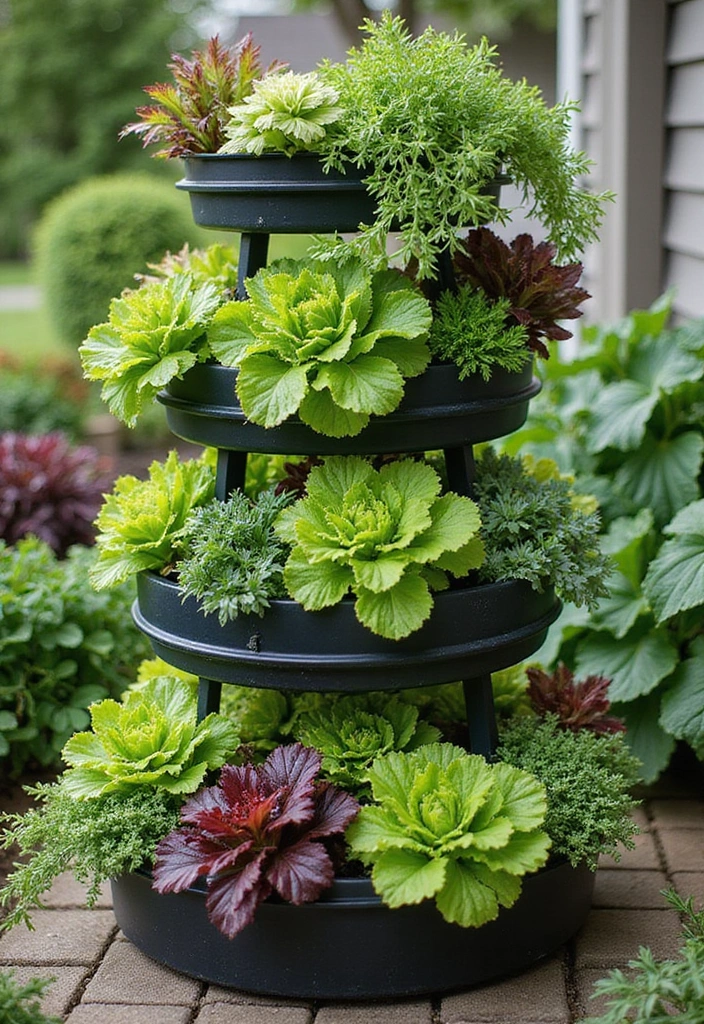
Transform your small space by utilizing vertical garden towers. These tiered planters allow you to grow a variety of vegetables in a compact area.
Imagine having pumpkins, tomatoes, and leafy greens all thriving in a vertical setup! This innovative approach maximizes sunlight exposure and makes it easier to care for your plants.
– Benefits: Saves ground space, adds a striking visual appeal, and provides an excellent drainage system.
– Tips: Choose a tower that allows for easy access to all levels, and consider using a drip irrigation system for efficient watering.
– Plant Suggestions: Spinach, lettuce, and herbs like basil and parsley are great choices for this setup.
With a vertical garden tower, you can enjoy fresh veggies while beautifying your outdoor space.
2. Raised Garden Beds
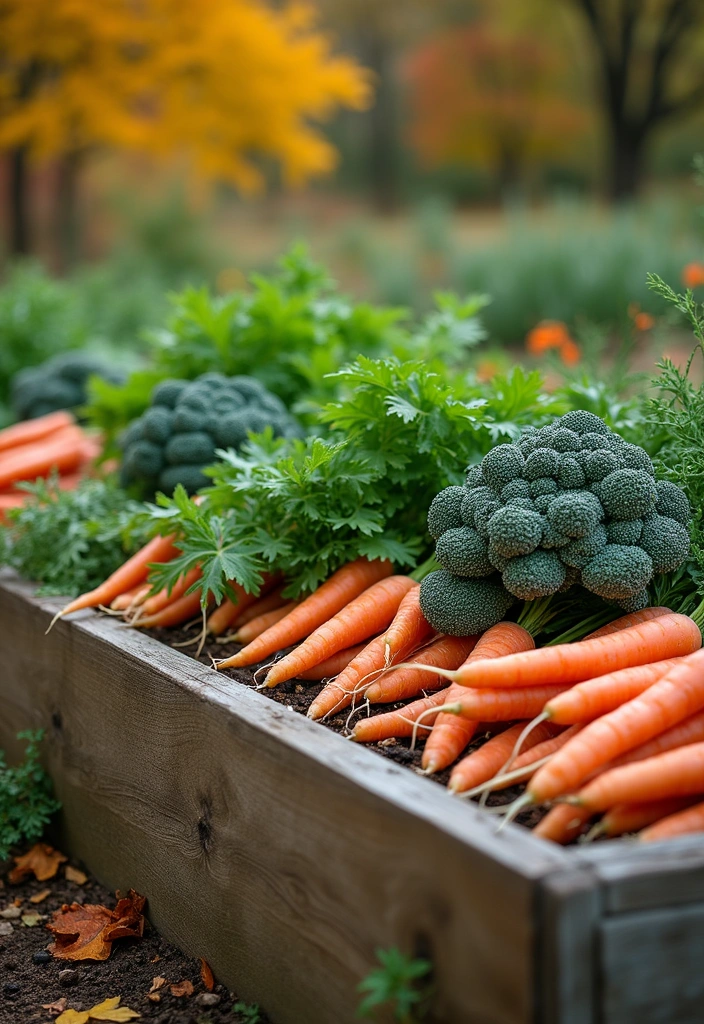
Raised garden beds are a fantastic option for small spaces, making it easier to control soil quality and drainage, which can be crucial in the fall.
Building a few simple raised beds can give you a designated area for your fall vegetables. Plus, they add dimension to your garden.
– Construction: Use untreated wood or stones; aim for a height of 12-24 inches for easy access.
– Soil Tips: Fill them with a mix of quality topsoil, compost, and organic matter for optimal growing conditions.
– Planting Ideas: Carrots, beets, and kale flourish in raised beds and are perfect for fall harvesting.
With raised beds, you’ll have a neat and organized space to grow your favorite veggies while enjoying a more manageable gardening experience.
3. Container Gardening
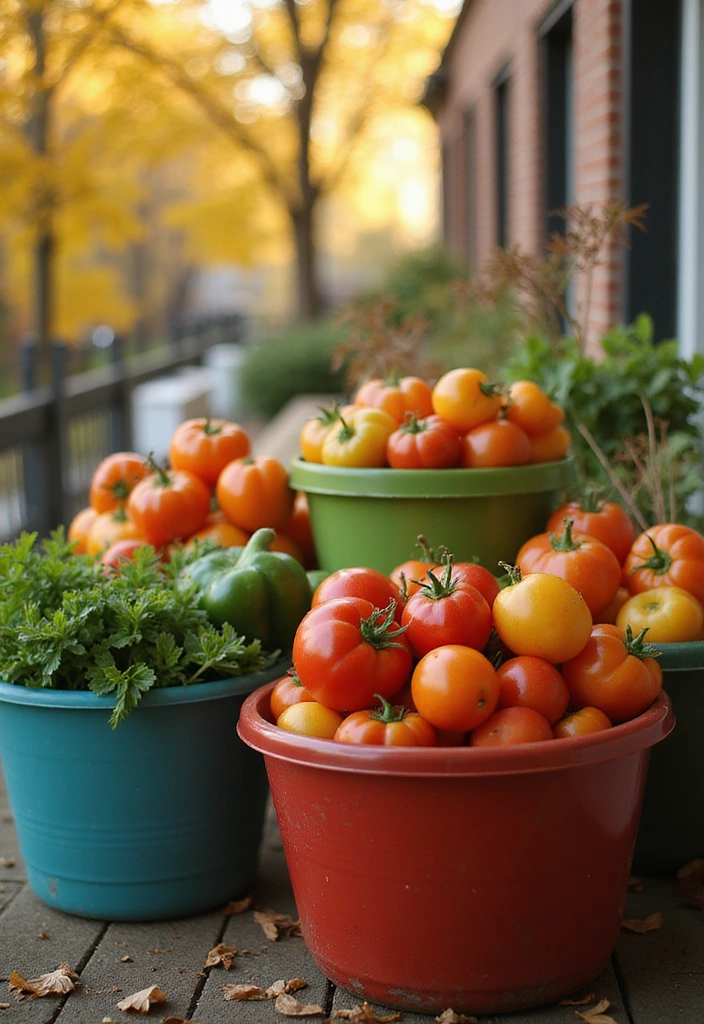
Container gardening is perfect for those with limited outdoor space, whether it’s a balcony, patio, or a small yard.
You can grow almost any vegetable in containers! Choosing various shapes and sizes can create a colorful and dynamic garden scene.
– Choosing Containers: Opt for materials like terracotta, plastic, or fabric pots. Make sure they have drainage holes.
– Soil Recommendations: Use a potting mix designed for containers that retains moisture yet drains well.
– Best Vegetables: Consider growing tomatoes, peppers, or even small squash varieties for a productive fall harvest.
With container gardening, you not only save space but also add a touch of personality to your fall garden.
4. Window Box Gardens
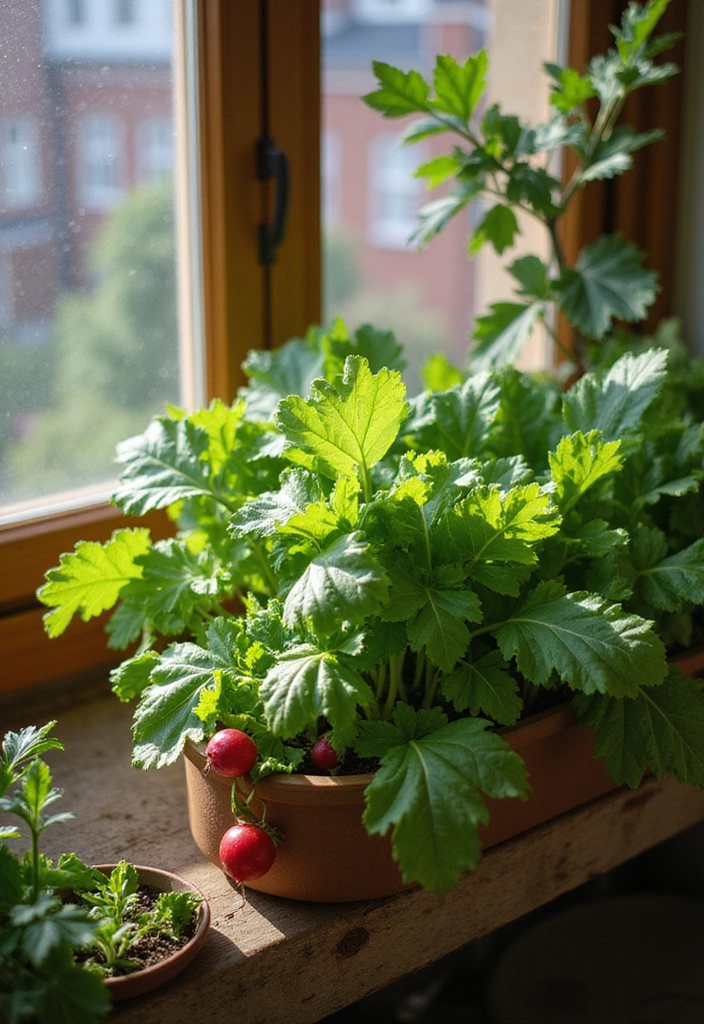
If you’re short on ground space, window boxes are a charming solution that allows you to grow vegetables right outside your window.
These small planters can fit on your windowsill, deck, or balcony, providing an appealing way to incorporate greenery into your living space.
– Selection: Choose window boxes that fit your window size and décor. They can be made from wood, metal, or plastic.
– Planting Tips: Ensure you use lightweight potting soil and consider using trellises for climbing plants like peas.
– Vegetable Choices: Leafy greens like arugula or small radishes work wonderfully in window boxes.
With a little creativity, your window boxes can become a mini vegetable garden delivering fresh ingredients right where you need them.
5. Hydroponic Systems
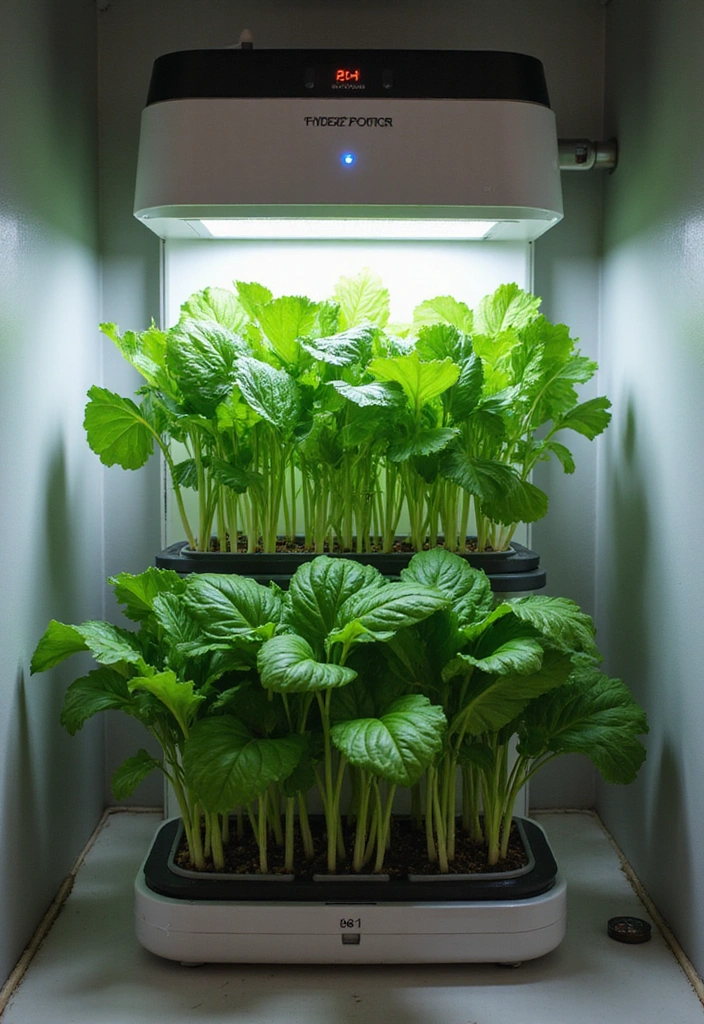
For those looking to innovate their small space gardening, hydroponics is a game-changer! This method allows you to grow plants without soil, using nutrient-rich water instead.
Hydroponic systems can fit into any corner of your home, making it a fantastic choice for urban dwellers.
– Types: Explore various systems like nutrient film technique (NFT), deep water culture, and aeroponics to find what suits your space best.
– Nutrient Solutions: Invest in high-quality nutrient solutions that cater to the specific needs of the vegetables you choose.
– Ideal Vegetables: Leafy greens, herbs, and even strawberries thrive in hydroponic systems.
With the right setup, you’ll be able to grow an impressive fall garden right on your kitchen counter or in a nook!
6. Vertical Wall Gardens
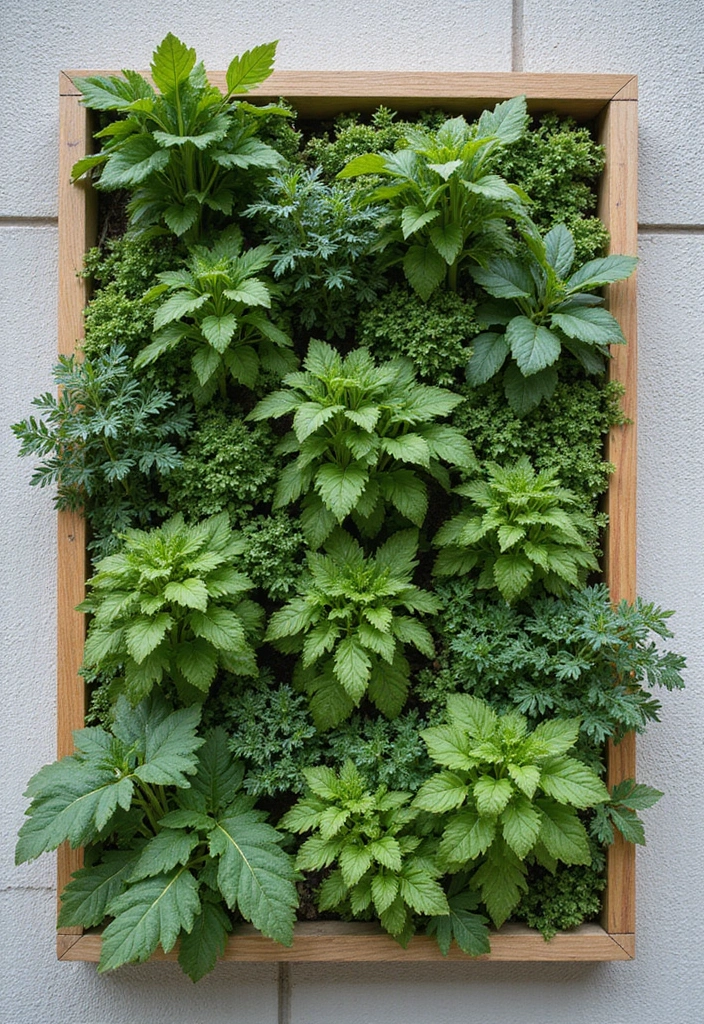
Why not turn an empty wall into a stunning vertical wall garden? This innovative approach helps you utilize vertical space while beautifying your environment.
A wall garden can be as embellished or minimalist as you desire, making it a perfect fall garden solution.
– Design Elements: Use pockets, grid systems, or even repurpose old pallets to create your vertical garden.
– Plant Choices: Opt for shallow-rooted vegetables like herbs, spinach, or even strawberries that will flourish in wall gardens.
– Maintenance Tips: Ensure that your wall structure has proper drainage and is positioned to receive adequate sunlight.
With a wall garden, you can create a vibrant green space that not only produces veggies but also elevates your home decor!
7. Grow Bags
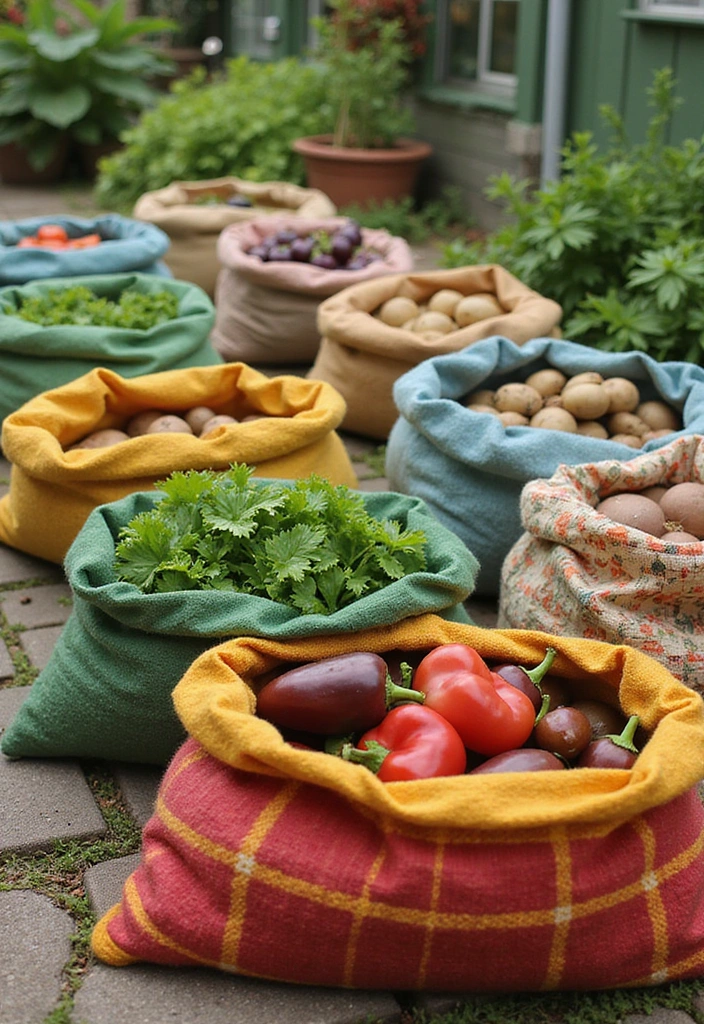
Grow bags are an affordable and flexible option for small space gardening. These fabric containers not only save space but also facilitate excellent aeration and drainage.
They come in various sizes, allowing you to grow everything from herbs to larger root vegetables.
– Advantages: Flexible, easy to move, and can be stacked or placed in tight spots.
– Best Practices: Use high-quality potting mix that retains moisture but has good drainage. Water regularly to ensure your plants thrive.
– Vegetables to Try: Potatoes, carrots, and peppers are perfect options for grow bags.
With grow bags, you can enjoy gardening without the commitment of traditional gardening beds.
8. Small-Scale Greenhouses
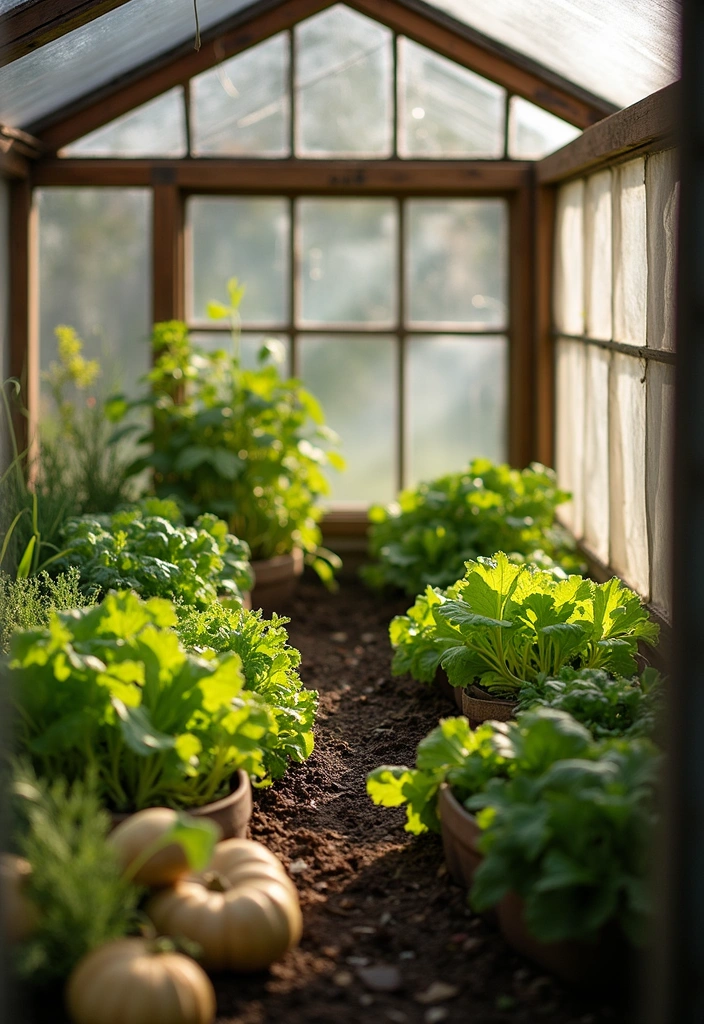
Think outside the box with a small-scale greenhouse! These structures allow you to extend your growing season well into the fall by providing a controlled environment for your plants.
Whether you opt for a mini greenhouse or a DIY version, this investment can yield delicious rewards.
– Sizing: Look for compact designs that can fit in small yards or even on balconies.
– Types: Choose between freestanding, collapsible, or shelf-style greenhouses that suit your space needs.
– Planting Ideas: Grow fall crops like lettuce, spinach, and frost-tolerant herbs that benefit from a greenhouse environment.
A small greenhouse can be a fun and effective way to elevate your gardening game!
9. Square Foot Gardening
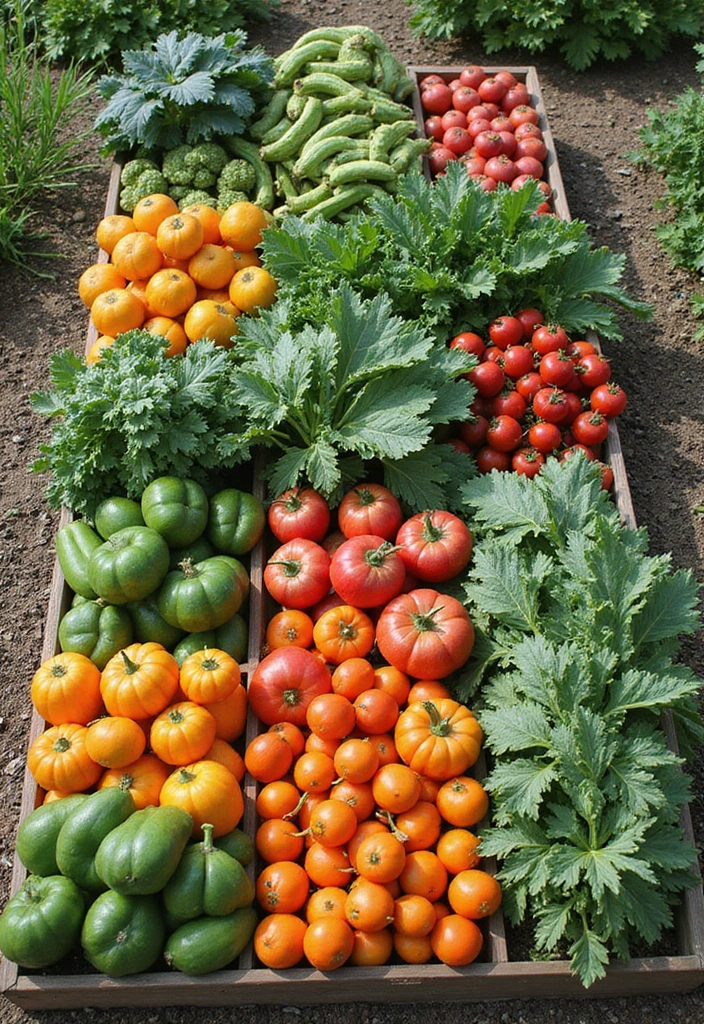
Square foot gardening is an excellent way to maximize your small gardening space. By dividing your plot into square sections, you can efficiently grow a variety of vegetables in a compact area.
This method is especially useful for those who want to grow several types of veggies without overcrowding.
– Planning: Each square can contain a different plant type, so plan according to your preferences and seasonal requirements.
– Soil Quality: Use high-quality soil mixes to ensure each section has the nutrients needed for growth.
– Crops to Consider: Beets, peppers, and radishes are perfect for square foot gardening.
With square foot gardening, you can enjoy a bountiful, organized, and manageable fall garden.
10. Companion Planting
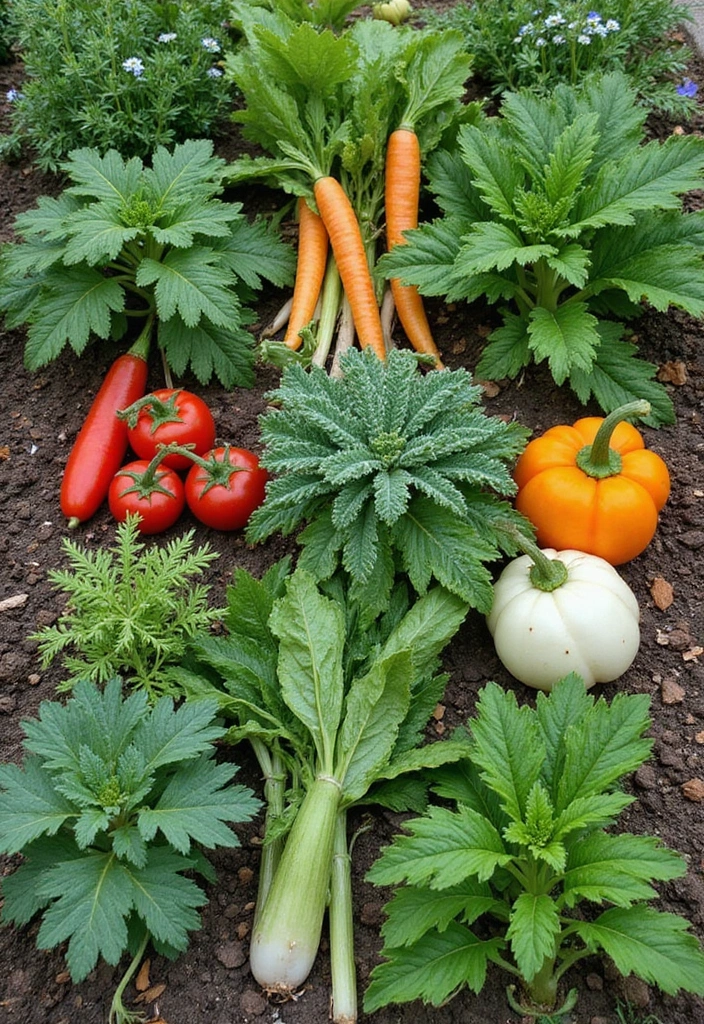
One of the smartest gardening strategies is companion planting. This technique involves growing certain plants together to benefit each other, optimizing space and enhancing growth.
In your small fall garden, companion planting can help reduce pests, improve flavor, and make the most out of your limited space.
– Popular Combinations: Plant basil with tomatoes or carrots with onions for mutual benefits.
– Planning: Consider the height and growth patterns of plants to prevent shading and increase airflow.
– Resource Saving: Companion planting can help you save on fertilizers and pesticides, making your gardening more sustainable.
By understanding how plants affect each other, you can create a flourishing green oasis in your small space.
11. Edible Landscaping
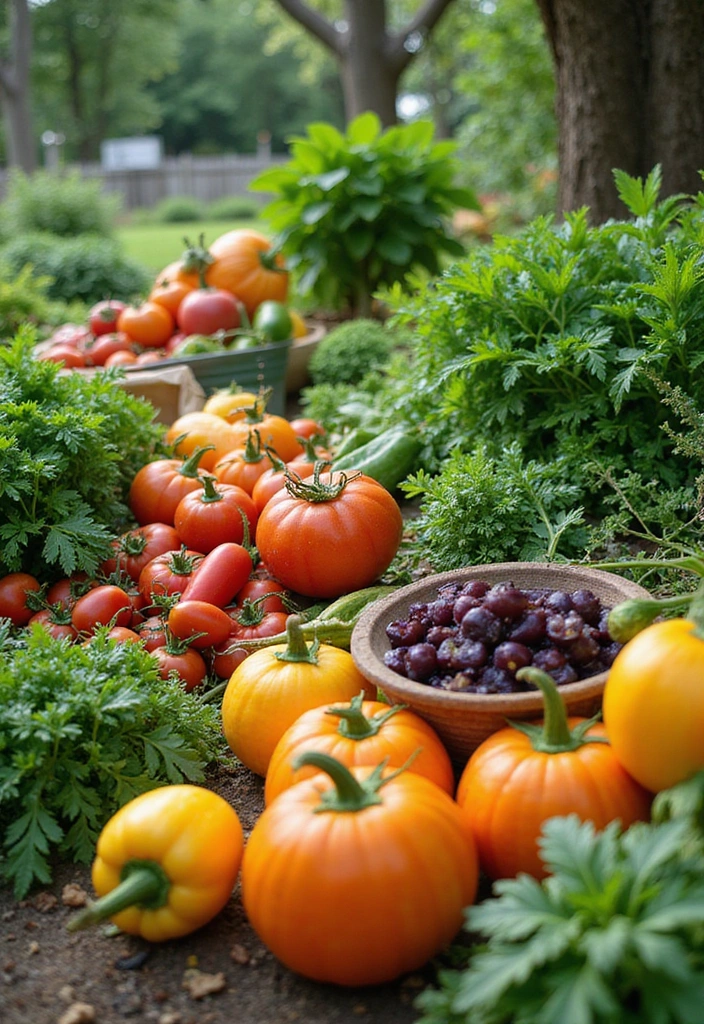
Consider transforming your front yard or garden into an edible landscape. This innovative approach to gardening combines aesthetics with functionality.
By incorporating vegetables and herbs into your landscaping design, you can create a beautiful and productive environment.
– Design Ideas: Mix ornamental plants with edible options like kale, Swiss chard, and flowering herbs.
– Layout Tips: Plan your garden beds to flow with the existing landscape, using curved lines and groupings of plants for visual interest.
– Maintenance: Ensure you choose plants that suit your climate and soil conditions for a lush garden.
With edible landscaping, you can cultivate a unique garden that not only looks good but also provides delicious harvests!
12. Community Gardening
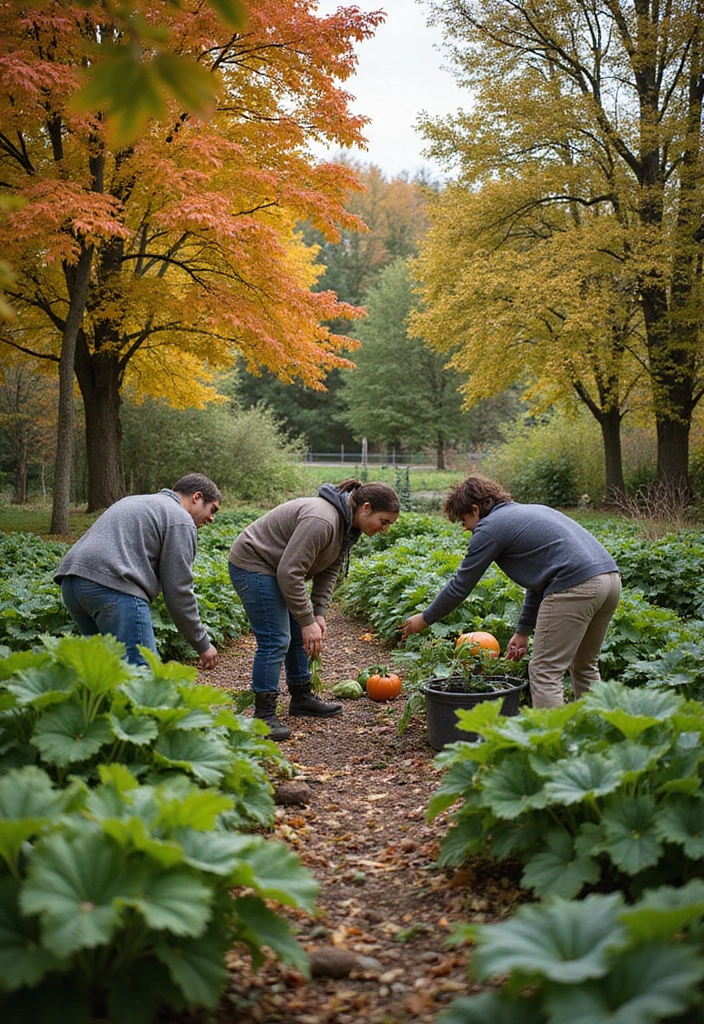
Joining a community garden is a fantastic way to get involved in local gardening initiatives while maximizing your fall harvest potential.
These shared spaces allow individuals to grow their vegetables together while benefiting from communal resources.
– Benefits: Access to shared tools, knowledge, and the ability to grow larger crops than in a small personal space.
– Getting Involved: Look for local community gardens, and find out how you can participate.
– Sharing Knowledge: Learn from fellow community gardeners about what to plant and when for the best results.
Being part of a community garden can foster relationships, and provide fresh vegetables, and be a fun way to learn gardening skills.
13. Forcing Bulbs
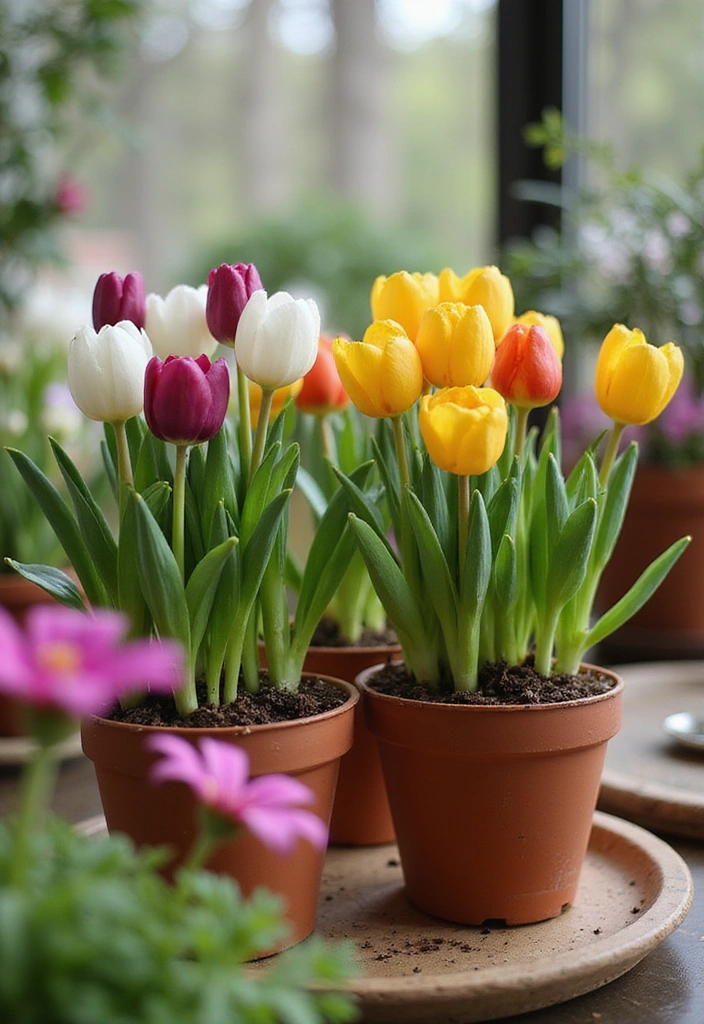
Forcing bulbs can be a delightful addition to your fall gardening routine, especially with a limited space. While primarily a winter activity, preparing bulbs in the fall allows for stunning blooms indoors when winter hits.
You can force bulbs like tulips or daffodils in small pots and enjoy their beauty while you wait for your fall vegetables to grow.
– Bulb Selection: Choose varieties that are suitable for forcing, ensuring they are fresh and healthy.
– Potting Details: Use a well-draining potting mix and place bulbs close together for a striking display.
– Watering: Keep soil moist but not soggy for optimal bulb growth.
Forcing bulbs can bring early spring vibes into your home, even in the depths of winter!
14. Intercropping
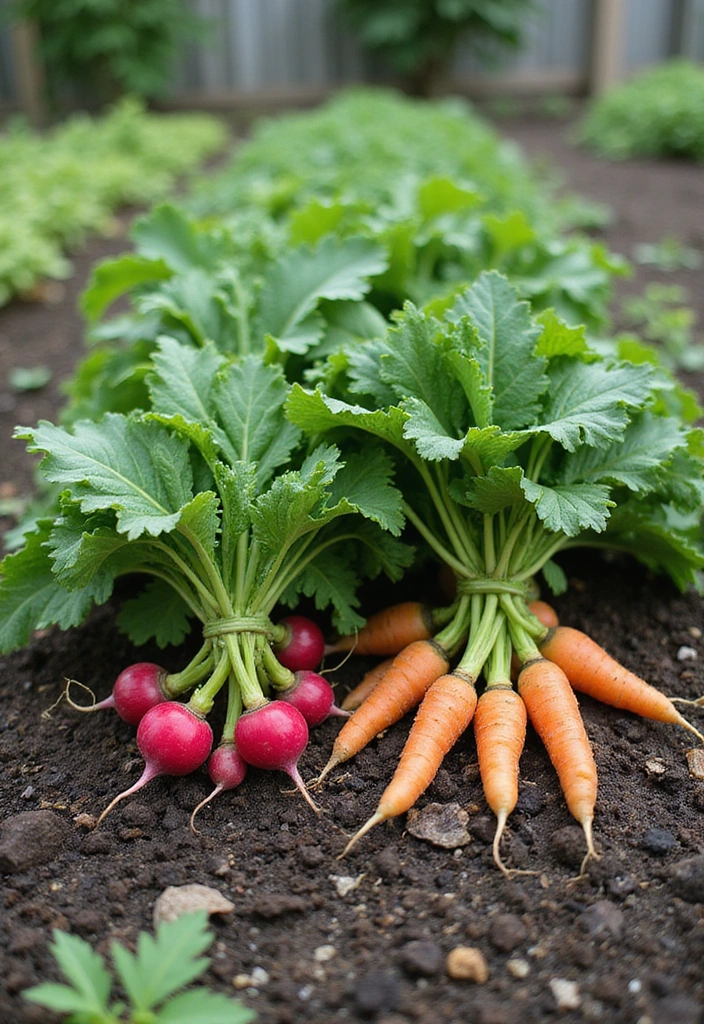
Another savvy technique for boosting your small space garden is intercropping, which involves growing different crops together in the same space.
By strategically pairing fast-growing crops with slower-growing ones, you can make the most out of each square foot of your garden.
– Crop Pairings: Plant fast-growing radishes alongside slower-growing carrots or beets.
– Benefits: It maximizes yield, reduces weeds, and keeps pests at bay.
– Planning: Keep in mind the space and nutrient requirements of each crop for a successful intercropping garden.
Intercropping can turn your small fall garden into a bustling ecosystem of productivity and resourcefulness!
15. Succession Planting
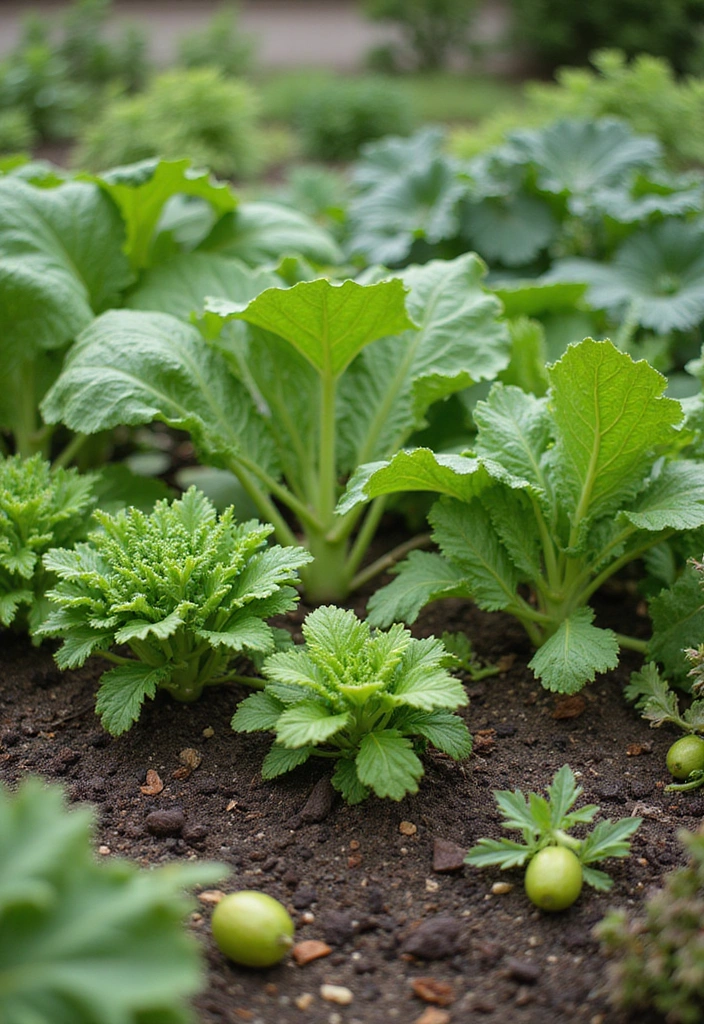
Maximize your harvest potential by practicing succession planting, which involves staggering your planting schedule to ensure a continuous supply of fresh produce.
This method is perfect for fall gardens, allowing you to enjoy a steady stream of vegetables throughout the season.
– Planting Schedule: After harvesting a crop, plant a new one immediately to keep your garden productive.
– Vegetable Suggestions: Rotate between crops like radishes, spinach, and lettuce for diverse harvests.
– Maintenance: Keep track of your planting schedule to optimize yields and minimize gaps in production.
Succession planting can be a game-changer for maintaining a vibrant and fruitful fall garden!
16. Green Manures
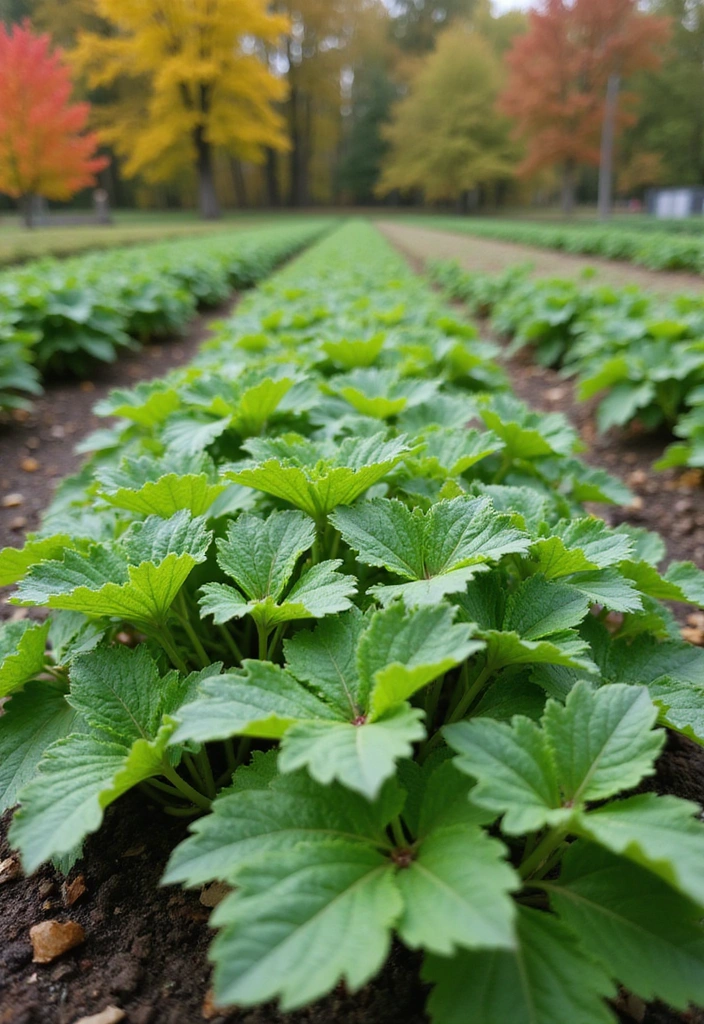
Green manures, or cover crops, can enhance your fall vegetable garden by improving soil health and fertility. These plants are grown not for harvest but to enrich the soil.
In small spaces, these crops can play a pivotal role in maintaining your garden’s vitality during the off-season.
– Choosing Crops: Opt for legumes like clover or vetch that naturally fix nitrogen into the soil.
– Planting Tips: Sow green manures a few weeks before your first frost for the best results.
– Benefits: They help prevent erosion, suppress weeds, and promote beneficial insects.
Integrating green manures into your gardening routine can set the foundation for a thriving fall vegetable garden.
17. Crop Rotation
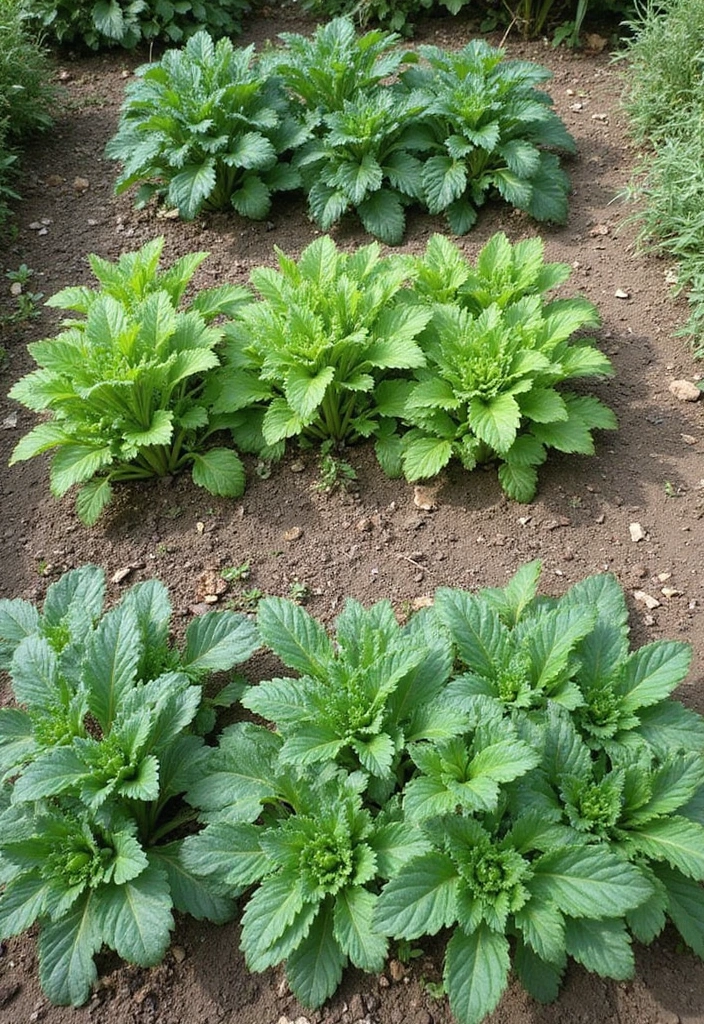
Crop rotation is an essential practice for maintaining soil health and preventing pests in your vegetable garden. By changing the location of your crops each growing season, you can enhance soil nutrients and reduce disease risks.
In small gardens, planning crop rotation may take a bit more thought, but it is entirely feasible.
– Planning: Keep a record of where each crop was planted to avoid repeating the same families in the same spots.
– Benefits: Reduces soil depletion, improves pest management, and enhances biodiversity.
– Crop Suggestions: Rotate heavy feeders like tomatoes with nitrogen-fixing plants like peas.
Implementing crop rotation will help your small fall vegetable garden thrive year after year!
18. DIY Composting
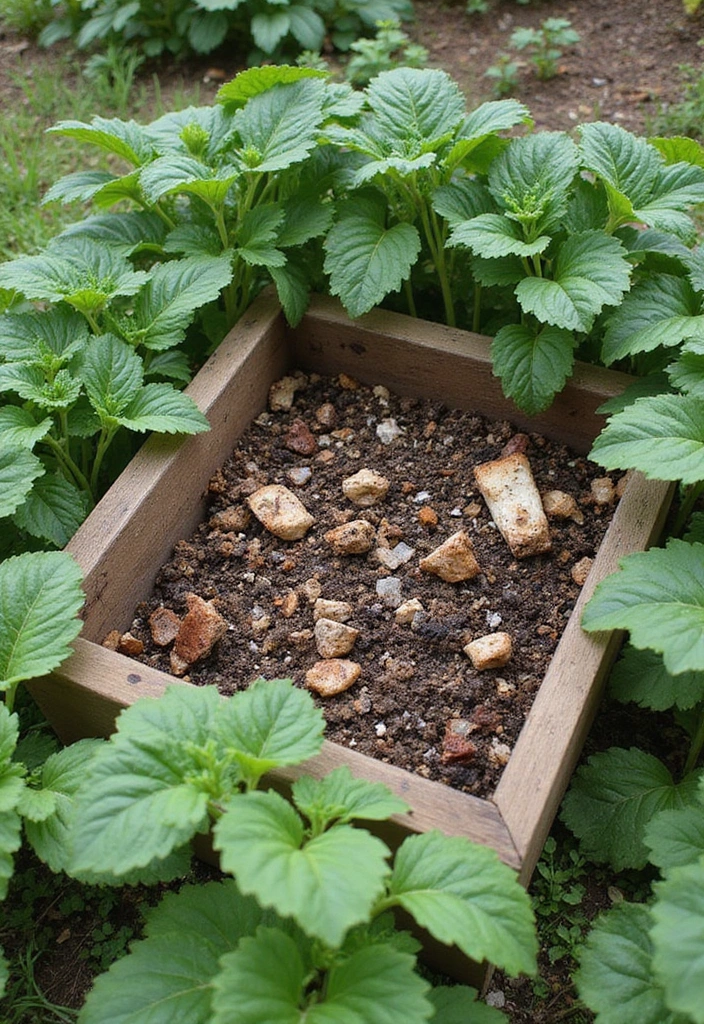
Creating your compost can greatly benefit your small vegetable garden, providing nutrient-rich soil amendments for your fall plants.
Even in limited spaces, composting can be accomplished with a little creativity!
– Composting Methods: Use a simple bin system, a worm composting setup, or even a bokashi method for small areas.
– Materials: Include vegetable scraps, coffee grounds, and yard waste, ensuring a good mix of greens and browns.
– Application: Use finished compost to enrich your garden soil, providing essential nutrients to your vegetables.
By crafting your compost, you can recycle waste while enhancing the health of your fall garden.
19. Planting Native Fall Vegetables
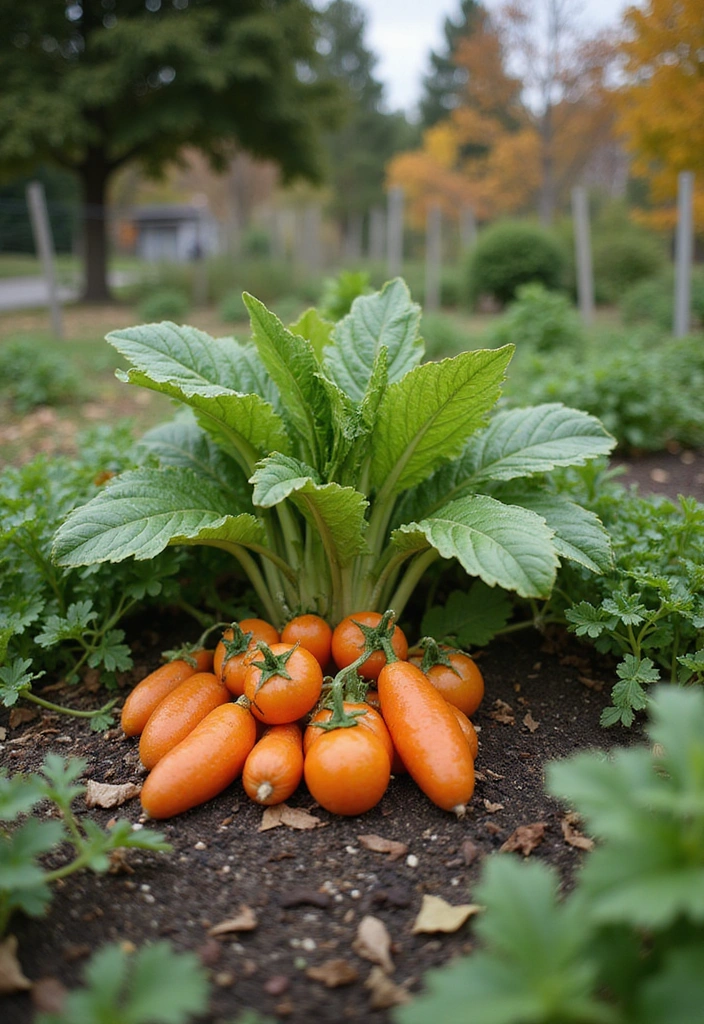
Consider planting native fall vegetables that thrive in your specific climate. These plants are naturally adapted to local conditions, making them easier to care for and often more productive.
By selecting vegetables that grow well in your area, you can enjoy a more sustainable gardening experience.
– Research Native Varieties: Discover which vegetables are best suited for your region during the fall.
– Planting Tips: Ensure proper spacing in your small garden, and be mindful of their specific water and sunlight needs.
– Examples: Look into varieties like butternut squash, sweet potatoes, or heirloom beans.
Planting native vegetables can help conserve local ecosystems while providing a delicious harvest for your table!
20. Utilizing Fences for Planting
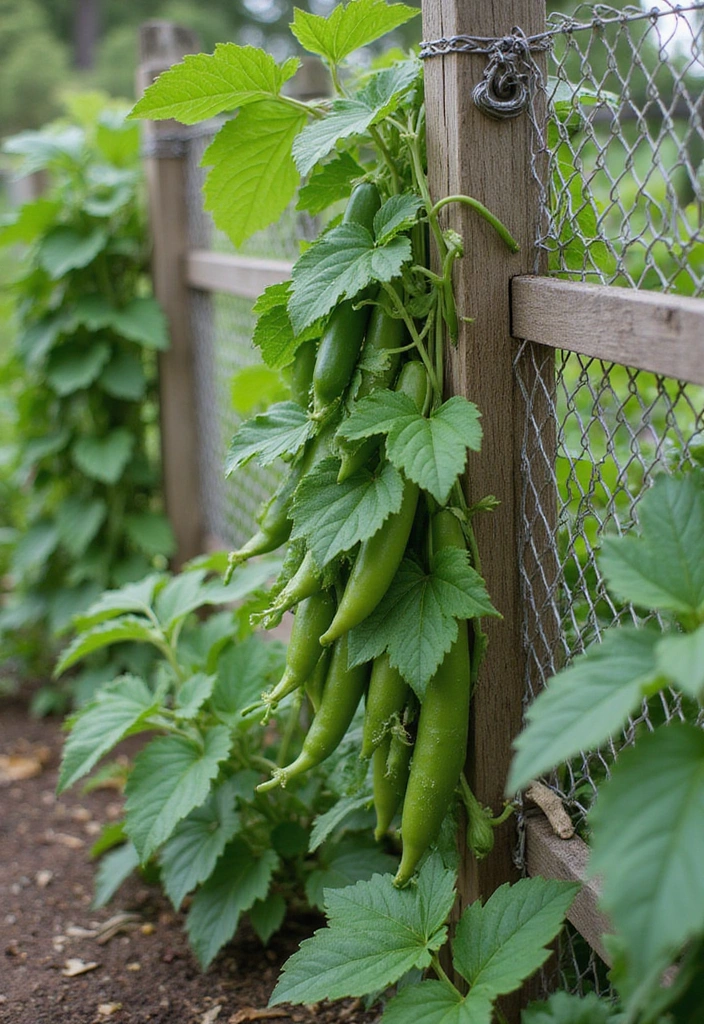
Fences can be more than just boundary lines; they can serve as natural supports for climbing vegetables!
This method is perfect for maximizing space vertically without taking away precious ground.
– Plant Choices: Consider growing peas, cucumbers, or pole beans using trellising on fences.
– Trellis Options: Install a simple lattice system or use strong wires to support your climbing plants.
– Benefits: This technique allows for better air circulation and ease of harvesting.
Making use of your fences for planting not only saves space but also creates a beautiful green backdrop.
21. Fall Harvest Festivals

Engage with your gardening community by participating in local fall harvest festivals! These events are a fantastic way to connect with fellow gardeners, share tips, and even showcase your fall vegetable garden.
Festivals often offer workshops, demonstrations, and a chance to learn about seasonal planting.
– Explore Local Festivals: Search for nearby events that celebrate fall harvests and promote gardening.
– Participation Ideas: Consider entering your produce into competitions or showcasing your gardening techniques.
– Networking: Build relationships with local gardeners and learn about the best practices for small space gardening.
Attending harvest festivals can enhance your gardening experience and inspire you to try new things in your fall garden!
22. Celebrating Your Harvest
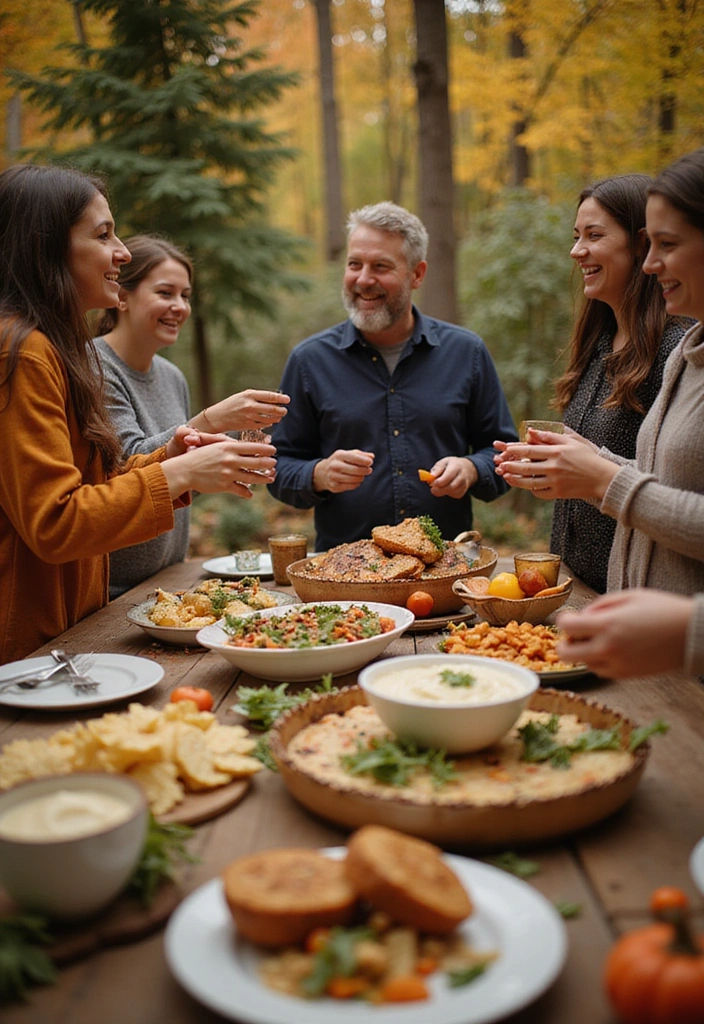
Finally, don’t forget to celebrate your hard work! After nurturing your small fall vegetable garden, it’s time to enjoy the fruits (and vegetables) of your labor.
Whether it’s a family dinner featuring your homegrown produce or sharing harvests with friends, celebrating your garden’s success is a must.
– Recipe Ideas: Create delicious meals featuring your fresh veggies, like a hearty vegetable soup or a fresh salad.
– Gardening Groups: Host a small gathering with fellow gardeners to share tips and recipes.
– Reflection: Take time to assess what worked well in your garden this fall and what you’d like to try next season.
Celebrating your harvest will not only reward your efforts but also inspire you to keep gardening into the next season!
Conclusion
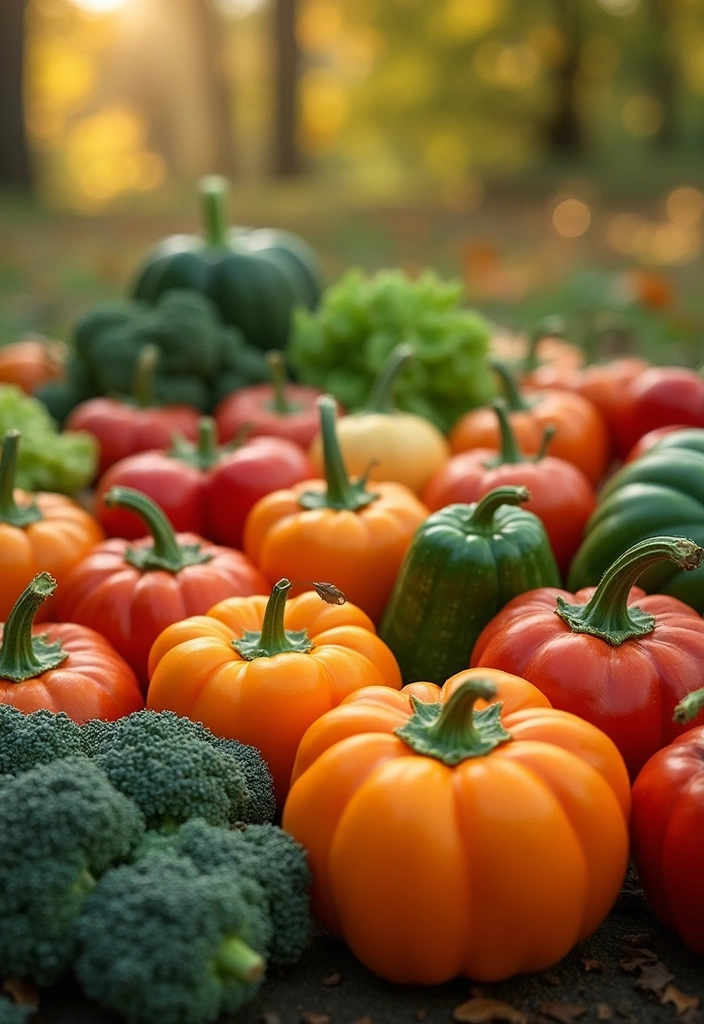
This fall, let your small space shine with creativity and innovation through these gardening ideas.
By exploring everything from vertical gardens to companion planting, you can transform your limited area into a thriving vegetable paradise. Embrace the season with new techniques and celebrate your successful harvest in style!
Now grab your gardening gloves, and let’s make this fall garden experience one to remember!

